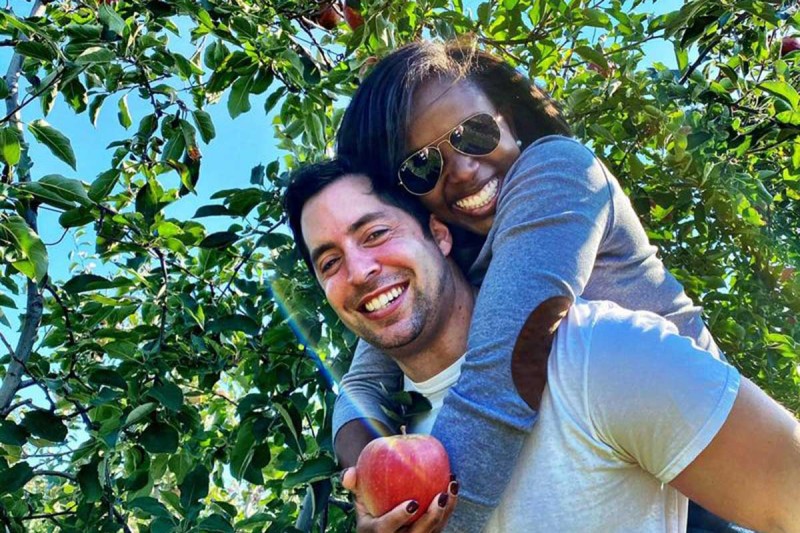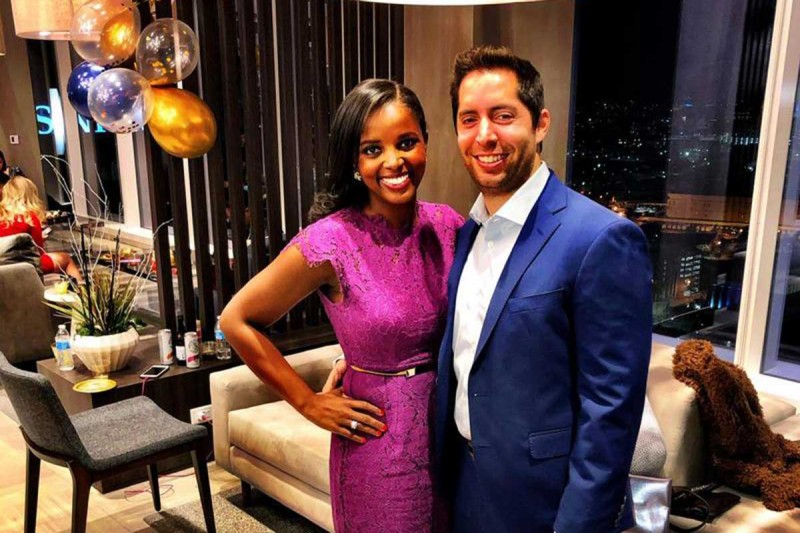Meghan Winston confronted a life-changing decision at just 33 years old.
Either she could undergo the surgical removal of her stomach — or she would face a very high risk of developing a rare and deadly form of stomach cancer, probably when she was still a young woman.
This cruel dilemma was forced on Meghan by a twist of genetics. After a close family member was diagnosed with breast cancer linked to the well-known BRCA gene mutation — which makes breast cancer much more likely — Meghan’s doctor urged her to have genetic testing.
It turned out Meghan did not have the BRCA mutation. But she did harbor another genetic mutation, known as CDH1.
What Is CDH1 and Hereditary Diffuse Gastric Cancer (HDGC)?
CDH1 is a rare genetic mutation that puts a person at high risk of developing a very aggressive form of stomach cancer called hereditary diffuse gastric cancer (HDGC).
HDGC starts with a tiny spot of cancer cells that burrow deep into the wall of the stomach. That makes stomach tissue appear normal, even if a doctor looks at the stomach using an endoscope. Once HDGC spreads, it is very difficult to treat.
“I was shocked,” says Meghan, who learned about the CDH1 mutation from doctors in Baltimore, where she lives. “CDH1 puts you at high risk for lobular breast cancer. You can screen for that. But I learned that the form of stomach cancer that I was at high risk for is very hard to detect early.”
The risk posed by the CDH1 gene varies from person to person, due to several factors. For Meghan, the risk of this aggressive form of stomach cancer was very high.
What Is a Gastrectomy?
“My doctors in Baltimore explained to me that as drastic as it sounds, removing my stomach — which is called a total gastrectomy — was my best option,” Meghan says. “That means taking out all the stomach cells in your body, called gastric cells. It makes sense. If you don’t have gastric cells, you can’t have gastric cancer, which is the medical term for stomach cancer.”
Anyone would be stunned to hear they should consider having their stomach removed to prevent a disease they don’t yet have. But for Meghan, the news hit particularly hard.
“I’ve been a foodie since childhood,” she explains. “In many ways, my life revolves around food — and so does my family’s life. I’m a devoted cook and baker. Trying out new recipes and restaurants is my passion. I used to be an event planner, where I would obsess about food for my events. And even now, I work for a global food company.”
Meghan admits, “Fearing my life was going to be so different without a stomach was really emotional for me.” But logic won out.
“I knew,” Meghan recalls, “that this cancer typically affects people who are my age. I wanted to have peace of mind and live life on my own terms. I really believe in living life by design — not by default. So I decided to have my stomach removed preventively.”
Why Meghan Chose MSK for Gastrectomy
With that question resolved, another major decision loomed: Where should Meghan have the gastrectomy performed?
In the Baltimore area, she talked with doctors at different hospitals. But she knew she wanted warmer, more compassionate care for such a life-changing procedure.
Internet research led her to gastric surgeon Vivian Strong at Memorial Sloan Kettering Cancer Center (MSK). “I read about her and learned she is a top authority on people facing my diagnosis. I made an appointment and came to New York with my parents.”
The connection between the two women was immediate. “Dr. Strong came in like a breath of fresh air,” recalls Meghan. “She eased my fears and those of my parents. We had a big list of questions written up, and she answered every single one and never rushed. She was so calming. I knew I was in good hands and had found where I needed to be.”
Dr. Strong explains: “It’s so important to focus on the person. I learn about what my patient needs and what motivates them. By truly listening to what they say, what they hope for, and what their biggest concerns are, I can focus my discussion, reassuring them that I understand and will address their concerns.”
Dr. Strong continues, “I aim to connect to each patient in a meaningful way and always remind myself that although I see countless gastric cancer cases, for this person, this is the first time they are experiencing gastric cancer. And I try to see those questions and concerns through their eyes.”
Dr. Strong also delivers a powerful message when she first meets a person facing a diagnosis like Meghan. “I tell them,” Dr. Strong says, “that this is the beginning of what I call a long-term relationship — at least five years.” She continues, “I tell them that I will see them through treatment and will continue to follow them for years in a partnership to recovery, and I will be there to help with any issues that may develop.”
That commitment, says Dr. Strong, helps medically and emotionally. “After their recovery and during follow-up visits, it is so rewarding to hear about the meaningful milestones in my patients’ lives, like the mother who was able to see her son graduate from high school, and the father who got to walk his daughter down the aisle. Another patient shows me baby pictures of her adorable daughter, whom she had three years after her cancer operation with me. Sharing these moments keeps me connected and reminds me that each patient has a network of people who love them and need them — and that each life matters so much.”
Meghan was surprised, however, when Dr. Strong laid out her timetable for recovery. Meghan recalls, “Dr. Strong told me that she thought I had a really great chance of recovery with everything back to normal in about six months.”
Road to Wellness
Meghan’s journey to eliminating her risk of stomach cancer began with Dr. Strong surgically removing her stomach. Meghan recalls: “Just before we were about to go into surgery, Dr. Strong held my hand and told me everything was going to be OK.” That moment, says Meghan, “was a physical symbol of this whole process beginning, and I still think about it now, more than four years later.”
For Dr. Strong, making that connection with the people she treats is vital. “Whenever I can,” she explains, “I like to personally bring my patients into the operating room. I can sense their apprehension, and to alleviate that, I will walk in with them, hold their hand, or place a reassuring arm around their shoulder. It is my way of letting that person know that I see them as an individual and that I am committed at the highest level to take care of them.”
Dr. Strong adds: “I think about how I would want to be treated if I were the patient. I try to approach each person as if they were a member of my own family.”
It’s an experience Dr. Strong knows personally. “A few years ago, my mother was diagnosed with a life-threatening cancer, and there was no question of her going anywhere other than MSK.” She continues: “I was so grateful to see that all the dedication and expertise that I commit to my patients came right back to us. My mother was treated with such caring and kindness by stellar colleagues. It made me feel so proud to be a physician at this truly special hospital.”
Meghan said her experience was exactly the same: “I like to joke that they took all the nice people in New York City and put them into MSK because everyone is just so friendly and so clearly wants you to get better. It’s amazing.”
Next Steps After Gastrectomy
In the weeks after gastrectomy, Meghan began to add solid food back to her diet — in very small quantities. “Even today, some things like pasta and soft breads can be challenging,” she says. “But I’ve learned that small portions of the foods I love are all fine. Now I graze on six smaller meals instead of the usual three, but my life is otherwise very normal.”
Meghan also undertook two big projects to ensure the genetic health of others. She urged her family members to undergo genetic testing to see if they harbored the CDH1 mutations as well, which is called cascade testing. “One of my cousins learned they have the mutation and are taking steps to manage it,” Meghan says.
MSK is a leader in this type of genetic testing, thanks to the expertise of the Clinical Genetics Service, led by medical oncologists Kenneth Offit and Zsofia Stadler. The service counsels people who have been diagnosed with cancer or have a family history, to explain the options for genetic testing.
Meghan also took steps to protect the next generation. She explains: “I had my eggs frozen so that in the future I can do IVF using embryos that don’t have the CDH1 mutation. That way, if I do have a family, they don’t have to go through this type of operation.”
Life Today
Today, Meghan says life has resumed its normal rhythms. As promised, she recovered within six months. “I celebrated by eating a juicy steak,” she says — “and I do that every year on the same day.”
Meghan also counsels other people with the CDH1 mutation who are considering a gastrectomy at MSK. Dr. Strong says: “She’s absolutely wonderful at telling people what to expect and how they can cope with it. She had bumps in the road, and she’s honest about it while also being so positive. She’s just a beautiful spirit.”
Meghan is also engaged to her now fiancé and due to be married in July. “He’s the one,” she says. “Dating without a stomach and explaining it to people can be odd. But he just took it in stride.”
For people facing the same agonizing situation she did, Meghan’s advice is to the point. “Come straight to MSK,” she says. “Their expertise is the best. But it’s also the way you are treated. You’ll have a team on your side supporting you, and everyone is just so nice. I just don’t think any other institution could give you the same peace of mind.”


